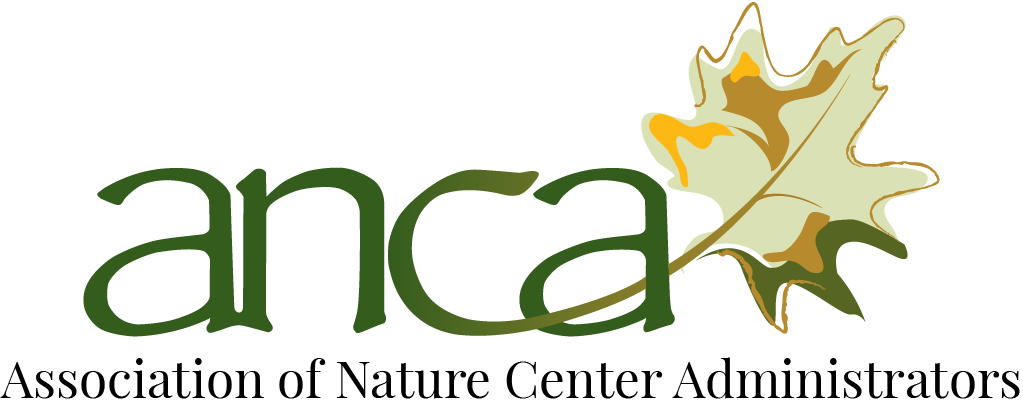Corky McReynolds, PhD, CPF
Program Director, Master of Nonprofit Leadership / Pacific University, OR
Background on Teams
Teams can be effective tools to reach better decisions, encourage inclusiveness, and generate a positive workplace culture (Benishek & Lazzara, 2019). Teams can also be sources of stagnation, frustration, and low productivity (Robbins & Finley, 2000). This article describes a set of focused and structured activities for a healthy and productive team to practice and complete before the team tackles a task or goal.
What is a team?
“We all work as a team around here” is a common phrase heard in many organizations, but what does that mean? Often the phrase is an expression of desired culture rather than reality. The phrase could represent values of respect, open communication, and collaboration that are necessary components of team, but by themselves, do not guarantee team success. A collection of individuals in an organization can hold to and express values of team-like behavior but not necessarily function as a team.
Team-like is different than Team. As an example, a year-long leadership program of selected individuals from across an organization participated in a variety of leadership development activities. The group developed strong core values during the program and a team-like atmosphere, but it was not until a final project was assigned that the collection of individuals became a team. Think of team as a functional and specific structure rather than as an assumed set of positive values and process.
Team Definition: A team includes individuals with a common purpose, process, and an intended outcome resulting from their work together.
Standing or ad-hoc committees, departments, and small groups could meet the definition of team. The leadership program participants became a team when the project was assigned because of two main criteria. One, the project required that all individuals in the program work on a single topic as one unit, and two, a final product was required within a given amount of time. A collection of individuals exercising team-like behavior now have the responsibility to develop into a team.
Why Teams Fail
Harvey Robbins and Michael Finley describe decision-making, empowerment, difficult people, and procedures as key factors that cause teams to fail. (Robbins & Finley, 2000). Patrick Lencioni describes trust, conflict, commitment, accountability, and results as key components of teams in trouble and in success (Lencioni 2005). The First Hour of Team details activities to build a new team or revitalize an existing team focusing on purpose, process, people, and product.
Purpose
Teams can fail, or at least flounder, when a clear purpose has either not been given, or has not been developed. The purpose cannot just be posted or provided verbally. The purpose needs to be described, discussed, and clarified so that all team members have a clear understanding of their charge.
Process
Groups of people tend to try and solve a problem when they first get together rather than to take time to develop their process on how to proceed. I once participated on a team that had started to brainstorm solutions to a perceived problem and at first it seemed an easy and short task. Hours later we were stuck, and our objective seemed to be out of reach. I suggested we pause and use a specific process to move us forward. The team leader responded, “We don’t have time for process.” Hours later and facing a deadline we finally had to force ourselves to a decision.
People
The same positive and core values held by the organization should serve as a foundation for how the team members are expected to work and relate to one another. Time must be dedicated to developing the team’s core principles as well as its own rules for engagement, interaction, support, and managing conflict.
Product
The outcome, the final deliverable, must be provided to and clarified for the team; it might sometimes be developed by and accepted by the team. All team members must have a clear understanding, defined role, and commitment to the product. For example, when I was asked to serve as a college level team leader, one of the first items of business was to have the person of authority clarify and specify what the outcome and in what form our deliverable was to be. Without this guidance the team most likely would have wandered off its path.
A Useful Tool: The Team Action Commitment
The first hour of any new or existing team should focus on establishing itself as an entity by clarifying its purpose, creating its process, supporting its people, and defining its product. Team charters can be effective tools to increase performance, productivity, and quality (Mathieu & Rapp, 2009). A powerful aid for developing and accomplishing effective team dynamics and higher levels of productivity is the Team Action Commitment (McReynolds, 2015). Completing the Team Action Commitment (TAC) results in deeper understanding, acceptance, and guidance for the team.
This article outlines the TAC as a tool for setting up and organizing new and/or existing teams. Accompanying TAC resources, including a practicable worksheet, are available by contacting the author (see end of article).
Description:
- The TAC becomes the agreement of work among the team members and the sponsor. The sponsor is the person with authority who establishes the team.
- The TAC is designed to be internally facilitated by a member of its team, or a designated leader if one has been identified. An outside facilitator may be needed if the team already exists and has been experiencing difficulties.
- The TAC worksheet is used by the team to discuss and record its responses to a sequence of components.
There are three sections to the TAC.
Section 1: Establishing the Team
The first section establishes basic information about the team.
Date Established
Record the date the TAC was developed.
Team Name
Write the team’s name. The team’s name identifies this group, differentiating it from other groups within the organization. The name could be assigned by the sponsor, shortened from the purpose statement, or a representative creative name relevant to the purpose.
Team Purpose
Write a short statement defining the team purpose. It should establish why the team exists and what is expected of the team. The general purpose may be provided by the sponsor and may be clarified and sharpened by the team. E.g., “Our website task group will evaluate our company’s current website and make recommendations for better client interactions.”
Team Leader
List the team leader. The team leader is the person asked by the sponsor to either chair and/or convene the team. If a sponsor convenes the team without a designated leader, then it is the team’s responsibility to select a leader or co-leaders. This role does not require the leader to facilitate all meetings, but it does mean this person or persons are responsible to guide to success the team’s purpose and TAC implementation.
Team Members
List the names/contact information of each team member. The team may seek outside expertise for specific information, but this individual does not need to be added to the team.
Section 2: Sponsor Information
The second section of the TAC focuses on the information that the sponsor must provide to the team. The team cannot decide these factors. The sponsor may not be aware of these factors when establishing the team, so the first task of a new team is to seek guidance on parameters and level of participation from the sponsor. Not knowing, understanding, or disregarding these two factors can result in team failure.
Parameters
Parameters are absolute boundaries that the team must work within. If a sponsor declares there are no boundaries, then the team must define and perhaps give examples to the sponsor. They may be few, but boundaries must exist. Examples of boundaries might be personnel, fiscal, policy, or mission.
Level of Participation
At what level of work is the committee operating? What becomes of the completed task? The sponsor must be clear for the team to be successful. There are three common levels of team participation:
- Recommendations: The team has the responsibility to make recommendations to the sponsor. The team has no direct responsibility once the recommendations have been submitted. The recommendations may or may not be implemented.
- Decision: The team has the responsibility to complete the task, make a decision; and is responsible for implementing the results. The team has the authority and access to resources to carry out its decision. This does not mean the team decides in isolation but should be in communication with the sponsor, other staff, and teams.
- Recommendations-Implementation: The team has the responsibility to provide recommendations, which after review from the sponsor and perhaps others, may be asked and given authority, to carry out the implementation of the results.
Deliverable
The deliverable is the expected product from completing the purpose. Is it a manual? A report? The sponsor may or may not have a clear vision of what the deliverable should be so the team may need to clarify. Key information includes:
- Deliverable To: Identify and write who the team is reporting and submitting the deliverable.
- Deliverable Due: Identify and write the date the team is expected to complete its deliverable.
Section 3: Team Responsibilities
The third section focuses on what the team is responsible for deciding about and committing to as part of their working together.
Protocol
Identify and list the team’s self-developed rules of working together (also known as norms). These self-identified and accepted rules for expected behavior are used to help the team stay on track and create a positive team dynamic with mutual respect and inclusion. Meeting facilitators use the team norms to protect individuals and the process. Common examples include 1) Start and end the meetings on time, 2) respect all member’s opinions, 3) one person talks at a time, etc. The list should be visible during team meetings. New suggestions can be added at any time.
Type of Decision-Making
Brainstorming ideas is easy, but how are decisions made within the team to reach closure with a topic, recommendation, or change in the process? Identifying how the group is going to make decisions is a critical factor to secure support, inclusion, and better results. Choose and write the preferred type or types of process the team will use to reach its decisions. Common types include informed majority, consensus, unanimity, and weight/rank.
- Informed majority: Team discussions are open, inclusive, and informative reaching a point whereby a vote on a final decision is determined by a majority vote.
- Consensus: Same level of discussion as informed majority but instead of a yes/no vote, consensus means everyone supports the results. Consensus is achieved when a decision is to be made and either situation occurs. Either all indicate full agreement and full support (thumbs up), or all may not fully agree and will fully support the decision (thumbs sideways). Any member indicating no agreement and no support means the team has not reached consensus (thumbs down). Discussion continues until a “thumb down” becomes at least a “thumb sideways.” Consensus does not take as long as it may appear as long as proposals are not offered until all information and discussion has been shared.
- Unanimity: All must agree and support the decision (all thumbs up). Often a team misinterprets the difference between consensus and unanimity thinking it needs unanimity when consensus is really the goal. Reaching unanimity does take longer and is usually not recommended for team decision-making. Unintended peer pressure could result in quick unanimity however one or more team members may not actually have reached that level of agreement.
- Weight/rank: A tool that teams can use to identify and prioritize their results is a method that is used to help reach a final decision. A simple and very effective weight/rank tool is 10/4. The team has a list of items. Each team member has 10 votes to distribute to the items on the list but cannot place more than 4 votes on any one item. The result is a rank, and the top ranked item is commonly accepted as the priority. Next, consensus is used to demonstrate agreement and support of the results. See facilitation literature for more information.
Communications and Connections
Determine and list appropriate levels of communication with others that the team should include to complete its purpose. When individuals or teams are identified they should be contacted to ascertain their desired level of communication and connection. This usually refers to other teams or individuals in the organization or contacts outside of the organization.
- Inform: The team needs to simply keep others aware and knowledgeable about its progress and activities.
- Input: The team seeks information and opinions from others. Those providing input clearly know in advance, from the team leader or delegate, that their input is advisory and may or may not be used.
- Involvement: The team seeks information and action where the participant is also a part of the decision-making outcomes.
Roles
Determine and list the various roles of the team members. Common roles include Leader/Chair, Meeting Facilitator, Record Keeper. It is recommended the roles of meeting facilitator and record keeper should be rotated through all members of the team. Other roles may be needed and identified by the team.
What’s Next?
Every meeting needs to end with a clear next set of steps to take. Identify actions individual members are assigned, a probable next team meeting agenda, and any other details that help establish a team memory. Write the next steps the team will take, and by when.
Summary
The TAC is a tool for establishing focus on the people, the process, and the product that teams are designed to achieve. Admittedly, the initial development of the TAC may require more than one hour; however, the time devoted to the task will pay off over the life of the team. Observation of a team that developed and used the TAC indicated that the team was notably more productive with stronger team coherence than a team that developed but then did not follow its TAC. When developing the TAC keep the task of developing the TAC simple so that implementing the TAC receives total buy-in from the team members. Developing the TAC in the first hour of team helps ensure productive results with full team support.
For the TAC worksheet, example, and section descriptions contact Corky McReynolds:
Resources
Benishek, L. & Lazzara, E. (2019). Teams in a New Era: Some Considerations and Implications. Frontiers in Psychology. 10:1006.
Lencioni, P. (2005). Overcoming the Five Dysfunctions of Team. Josey-Bass.
Mathieu, J. E., & Rapp, T. L. (2009). Laying the foundation for successful team performance trajectories: The roles of team charters and performance strategies. Journal of Applied Psychology, 94(1), 90–103.
McReynolds, C. (2015). The First Hour of Team. Presentation at International Association of Facilitators Conference, Banff, Alberta.
Robbins, H. & Finley, M. (2000). The New Why Teams Don’t Work: What Goes Wrong and How to Make it Right. Berrett-Koehler.
Advertisements





